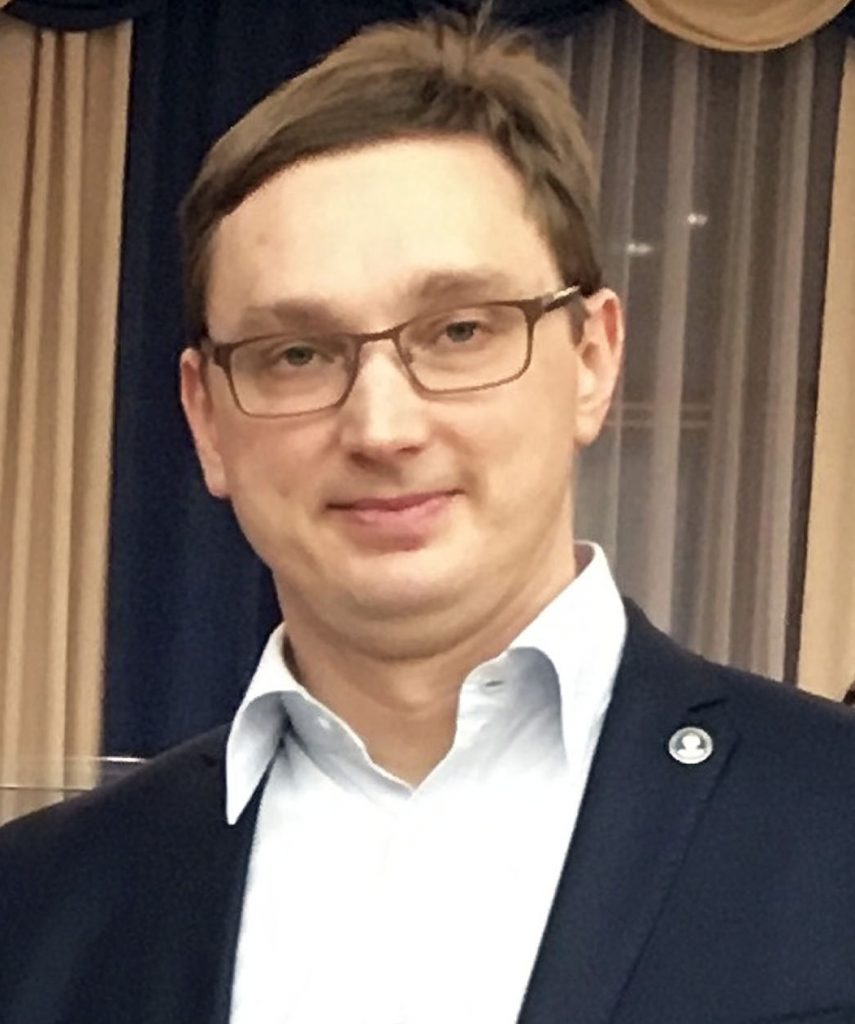 |
Vladimir V. Mironov Dr.Sci. (Technical), Professor Head of the Group INMI, room 303 |
Main research directions:
The group is focused on the development of scientific foundations of technological processes of solid-phase microbial degradation of organic waste, including aerobic-anaerobic biodegradation, and biofiltration of gas emissions. The particular theme of interest is the composition, functions and diversity of prokaryotic and fungal microbial communities of organic waste of various origins during their processing. In this direction investigation and characterization of active microorganisms-destructors in organic waste, we consider being crucial. The research interests also include the activity of compost microorganisms against phytopathogens and the production of compost having the property of plant protection.
The results of the group’s research extend the knowledge of microbial waste degradation and help to improve the technology of organic waste processing. The process of waste degradation was adjusted with our help at several large enterprises (Grunt Eco LLC, Agrofirma Bunyatino JSC, LISKo Broiler LLC).
The influence of high humidity and the C/N ratio of mixed food and agricultural waste on the development of the microbial community during composting and the quality indicators of the mature compost was established. For the first time, the greatest activity of nitrification in the high-temperature stage of the process was shown.
The changes in forms of nitrogen under the influence of nitrogen cycle microorganisms were traced and patterns of the succession of the microbial community during composting of dehydrated anaerobic digested sewage sludge were revealed. The activity of methanogenic archaea of mixed sewage sludge and plant waste after prolonged high-temperature composting was shown.
For the first time, the succession of the microbial community during composting of mechanically separated organic fraction of municipal solid waste (ms-OFMSW) has been characterized in detail. A laboratory collection of microorganisms actively involved in the aerobic solid-phase ms-OFMSW degradation was obtained.
Selected publications:
- Ivanov, Y.A. Mironov V.V. Test results In-vessel composting system at the cattle farm located in the central part of Russia. Agricultural Mechanization in Asia, Africa, and Latin America. 2018. Vol.49 No 3. P. 86-90 https://portal.issn.org/resource/ISSN/0084-5841
- Nozhevnikova, A.N., Mironov V.V., Bochkova E.A., Litti Yu.V., Russkova Yu.I. Composition of a Microbial Community at Different Stages of Composting and the Prospects for Compost Production from Municipal Organic Waste (Review). Appl Biochem Microbiol 55, 199–208 (2019). https://doi.org/10.1134/S0003683819030104
- Demkina, E.V., Doroshenko U.V., Babich T.L., Mironov V.V., Borisov A.V., Demkina T.S., El-Registan G.I. Buried Soils as a New Source for Isolation of Biotechnologically Significant Bacterial Strains. Microbiology 88, 631–641 (2019). https://doi.org/10.1134/S0026261719050059
- Mironov V.V., Bochkova E.A., Gannesen A.V., Vanteeva A.V., Russkova Yu.I., Nozhevnikova A.N. Dynamics of Biological Processes during Composting of Anaerobically Digested Wastewater Sludge. Microbiology 89, 470–482 (2020). https://doi.org/10.1134/S0026261720040086
- Mironov V, Vanteeva A, Merkel A. Microbiological Activity during Co-Composting of Food and Agricultural Waste for Soil Amendment. Agronomy. 2021; 11 (5): 928. https://doi.org/10.3390/agronomy11050928
- Mironov, V., Vanteeva A., Sokolova D., Merkel A., Nikolaev Y. Microbiota Dynamics of Mechanically Separated Organic Fraction of Municipal Solid Waste during Composting. Microorganisms 2021, 9, 1877. https://doi.org/10.3390/microorganisms9091877
- Mironov, V.V., Potokina V.V., Botchkova E.A., Vanteeva A.V., Zagustina N.A., Parshina S.N. Activity of Methanogenic Archaea during Composting of Organic Waste. Applied Biochemistry and Microbiology, 2021, Vol. 57, No. 6, pp. 750–759. DOI: 10.1134/S0003683821060107